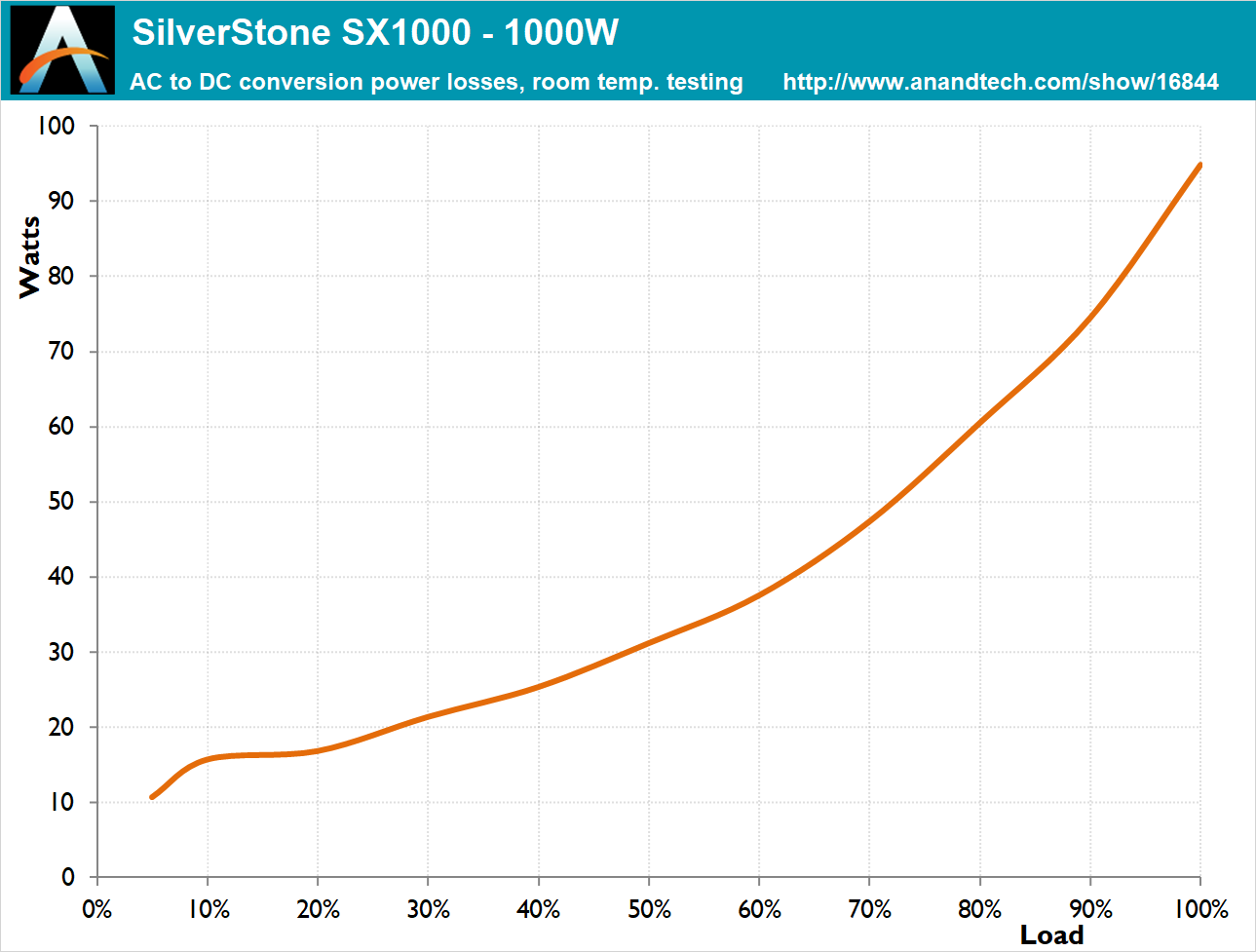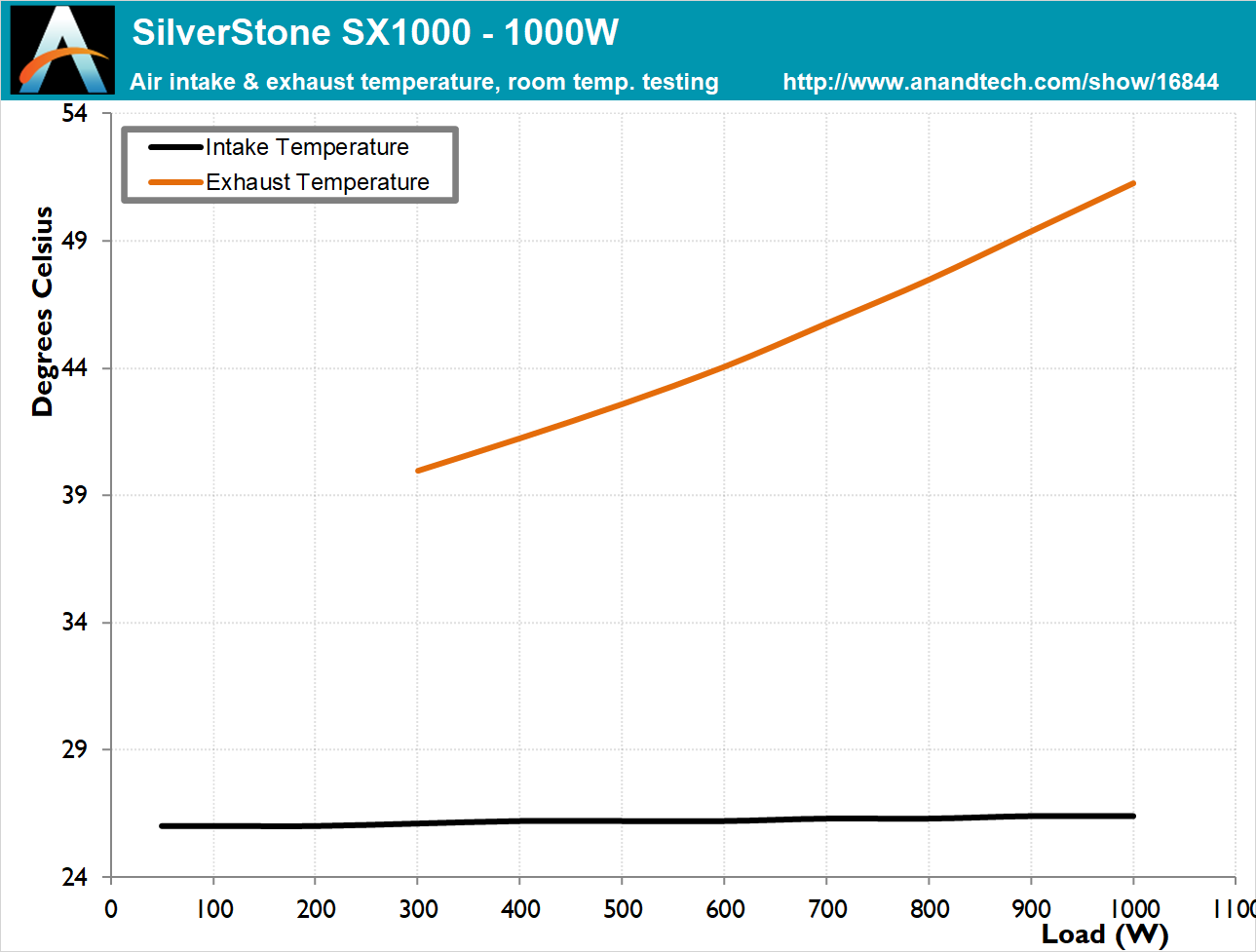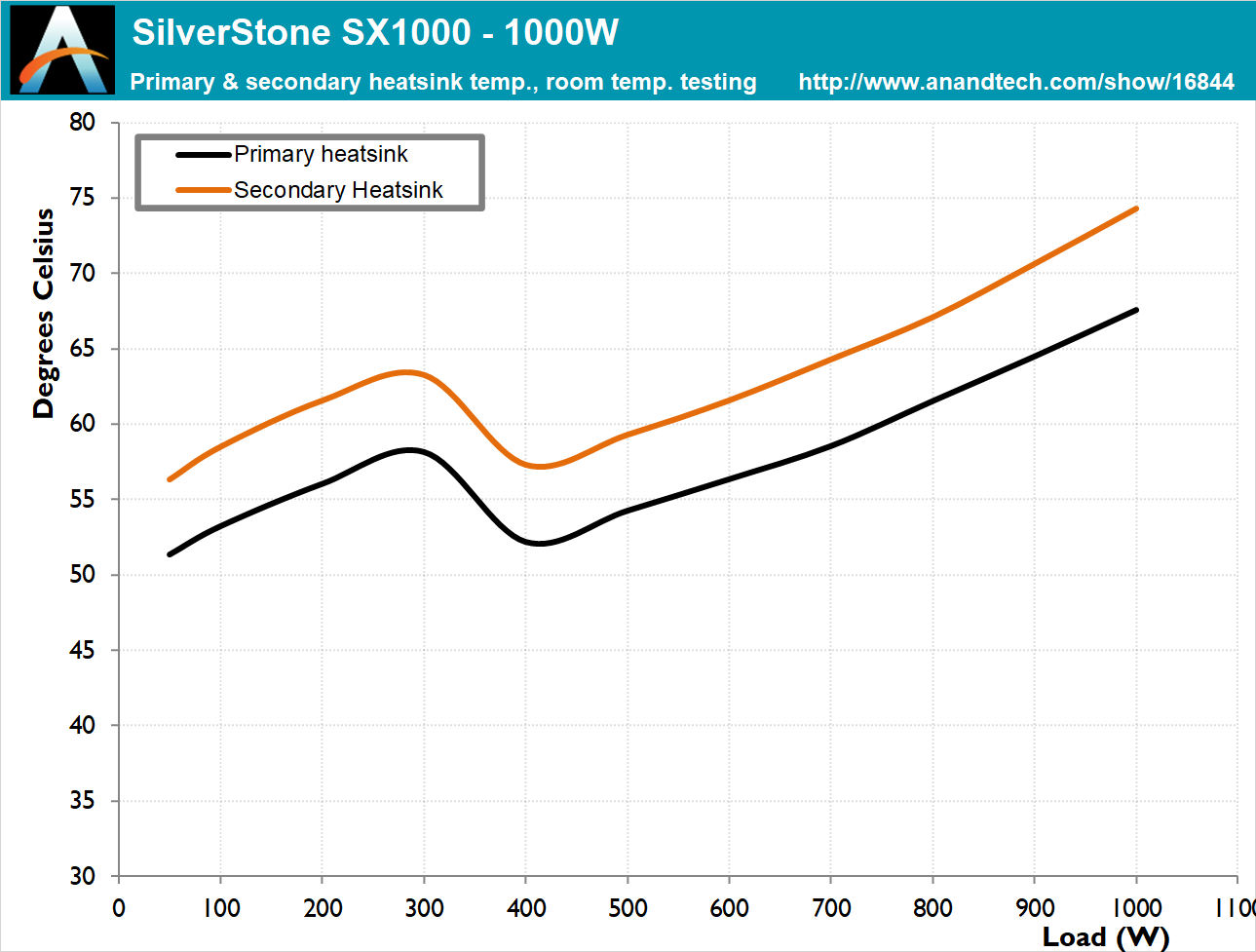The SilverStone SX1000 SFX-L 1 kW PSU Review: Big Power for Small Form Factors
by E. Fylladitakis on July 28, 2021 9:00 AM EST- Posted in
- Cases/Cooling/PSUs
- PSUs
- SilverStone
- SFX
- SFX-L
Cold Test Results (~25°C Ambient)
For the testing of PSUs, we are using high precision electronic loads with a maximum power draw of 2700 Watts, a Rigol DS5042M 40 MHz oscilloscope, an Extech 380803 power analyzer, two high precision UNI-T UT-325 digital thermometers, an Extech HD600 SPL meter, a self-designed hotbox and various other bits and parts. For a thorough explanation of our testing methodology and more details on our equipment, please refer to our How We Test PSUs - 2014 Pipeline post.
True to its specifications, the SilverStone SX1000 easily reached 80Plus Platinum efficiency levels while operating with a 115 VAC input. The increase in efficiency that switching to a 230 VAC input offers is measurable, but it would not be enough to grant the SΧ1000 an 80Plus Platinum certification, as the efficiency at 50% load did not surpass 94% as required by the protocol. Nevertheless, the efficiency figures are very good by any standard.
With that said, there is still significant room for improvement on the lower end of the curve, as the efficiency drops very sharply when the load is lower than 7-8% of the unit’s rated capacity. This is a small fraction of the PSU's total output, but still a significant amount of power on an absolute basis thnaks to the unit's high output.
SilverStone designed the SX1000 to be semi-fanless, i.e., the fan only spins when the load or temperatures are high enough to necessitate it. 80Plus Platinum units are efficient enough to operate in fanless mode until the load reaches several hundred Watts. The SX1000 was true to that rule, starting its fan when the load reached 300 Watts and remained this high for a few minutes. That is high enough to ensure that the fan will never spin when the system is idling or performing simple tasks.
Because the thermal circuit only starts the fan when the load is 300 Watts or greater, there's a fairly narrow window where the fan remains relatively quiet. If the load exceeds 500 Watts, the tiny heatsinks of the SX1000 cannot cope with the thermal losses and the demand for cooling falls upon the low-profile fan, which will keep increasing its speed in order to maintain the internal temperatures of the PSU within safe levels. The fan reached its maximum speed with a 90% load, while the SX1000 was operating unobstructed and in a room temperature environment.















37 Comments
View All Comments
patrickjp93 - Friday, July 30, 2021 - link
Noctua and Nidec Servo would like words with you. SSO2 bearings ARE sleeve bearings.Oxford Guy - Tuesday, August 3, 2021 - link
If they can be mounted horizontally they’re not sleeve bearing fans.Samus - Thursday, July 29, 2021 - link
blade shape and shroud design dictate pressure and velocity. bearing has nothing to do with it.Oxford Guy - Thursday, July 29, 2021 - link
Tell that to the manufacturers, then. They don't produce sleeve bearing fans with high static pressure in mind.Oxford Guy - Thursday, July 29, 2021 - link
And... regardless of this debate... Is there someone who wants to argue over my point about sleeve bearing fans needing to be installed vertically in order to have good lifespan?... making their use in power supplies misguided, since they're not mounted vertically.
tonyou - Friday, July 30, 2021 - link
Sleeve bearing fans also come in various versions (hydro, hypro, duro, hydralic, FDB, etc...) that may have enhancement made to provide better stability for horizontal uses too. But generally, you'll get the shortest lifespan by mounting a sleeve bearing fan horizontally upside down (airflow blowing upwards).Oxford Guy - Tuesday, August 3, 2021 - link
FDB fans and those other types are not what I have been discussing.I have been discussing true/classic sleeve designs, the kind that must be mounted vertically.
Don’t move the goal posts.
tonyou - Friday, July 30, 2021 - link
If you have the same fan design and speed, one with sleeve bearing and one with ball bearing. The air pressure generated from the two fans will be identical. The main demand for higher pressure fans come from server/industrial applications and these are made with ball bearing for longevity and reliability as the priority.Oxford Guy - Tuesday, August 3, 2021 - link
Post one example of a high static pressure classic sleeve bearing fan.tonyou - Friday, September 3, 2021 - link
Generally fans designed for high pressure applications have higher top speed (for 120mm fans, usually 2000rpm or more), for which sleeve bearing are not suited for. That's the reason they aren't made because no reputable brand will want to sell a fan that will burn out in a year.The point we were trying to make is that if two fans were to have identical speed, frame, and blade design with the only difference being the bearing used. The pressure generated between the two fans will be identical.